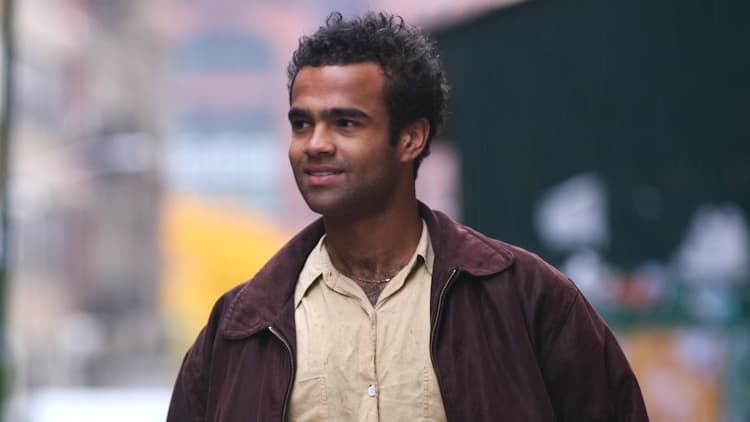Judith Williams is leading the way in a new era of diversity and inclusion.
After years of trailblazing efforts for diversity and inclusion, often shortened to D&I, at tech giants including Google and Dropbox, Williams joined enterprise software company SAP as head of people sustainability and chief D&I officer in 2018.
SAP, which has been acknowledged for its efforts to recruit and promote a diverse workforce, was recently named by Forbes as the best employer for diversity in 2020.
For Williams, the recognition comes at a critical time when the tide is turning in the world of D&I. First, there was a need for access to data in order to show a lack of diverse representation in the work force, particularly in the tech industry.
"When I think about starting at Google, a lot of what we were doing was getting the attention of leaders," Williams tells CNBC Make It about her time as Google's global D&I program manager from 2011 to 2015. "We used to have to say to leaders, 'Hey, can we show you diversity data? Can we have a conversation about what's going on in the organization and outside Google?'
"Now, we find the conversation has gone beyond that," Williams says. "If you're not considering some questions about diversity and inclusion in your organization, some folks on your team will ask about it, the marketers will ask about it, the analysts will ask about it. It's become a different kind of conversation."
The turning point in diversity and inclusion
Today, the conversation is less about proving that lack of representation at work is a concern — more often, the public is holding companies accountable for remedying it.
For example, a 2018 study by the National Urban League found that fewer than 3% of tech workers identify as black at companies such as Uber, Twitter, Google and Facebook. Meanwhile, a majority of today's young workers say they place great importance on gender and ethnic diversity when considering a potential employer, according to Deloitte's 2019 Millennial Survey.
Williams's work involves shifting that conversation from awareness to action. Action doesn't necessarily mean more programming, however.
"We often get fixated on: Are you launching an unconscious bias training? Are you launching a mentorship program? Are there employee network groups having events celebrating Black History Month?" Williams says. "And all that stuff brings the attention of workers. But once you have that attention, it's the hard work of having to change culture."
Changing the culture at a company with 100,330 global employees, just a quarter of whom are based in North America, is no easy feat. For Williams's part, she tackles the issue like any business problem. And like in other parts of her job, it starts and ends with data. The numbers inform her strategy, set expectations, establish accountability and, ultimately, measure results.
"At the end of the day, I know having a more diverse and inclusive workforce is going to lead to some financial outcomes. So you want to be consistently driving toward those outcomes. Focus on outcomes, not activity," Williams says.
What an outcomes-based strategy looks like
Williams admits that when joined SAP, the culture was still very much focused on programming. It's been her job for the last year and a half to shift that conversation to an outcomes-based strategy. That goes for every stage of the talent pipeline, from recruiting to rewarding and promoting.
For example, SAP's Project Propel is a partnership where the company teaches its software to undergraduate and MBA students at Historically Black Colleges and Universities, who can use these learned skills to leverage career opportunities with the company or one of its partners after graduation.
Women hold roughly 26% of management positions at SAP, and the company aims to reach 30% by 2022. To get there, the company is using data to determine where workers, especially women, might be experiencing progression gaps and career stalls. More transparent discussions between workers and leaders can help under-recognized top performers advance more quickly. Ultimately, SAP hopes to achieve the same promotion ratio for men and women.
Williams is especially proud of the work she's done with SAP's Autism at Work program, which launched in 2013 and aims to recruit and train workers on the autism spectrum.
About half of professionals who take part in SAP's six-week pre-employment training program end up with with a paid position at the company. In 2019, the program made the most number of hires from the program in a single year, bringing SAP's global workforce of employees with autism to more than 175 workers.
"How we think about our Autism at Work program is that there isn't any specific job that people who come into the program are expected to take on," Williams says, "but we remove the barrier so they can show their true capabilities to shine in any job."
Harnessing data to change the world
Williams isn't daunted by the magnitude of the problems she's trying to solve. If anything, she's looking to scale her work beyond the thousands of employees she's already impacted.
"I want to change the world," she says. "The reason why I'm interested in diversity and inclusion isn't because I'm passionate about diversity, but because I'm passionate about fairness and equity and thinking, 'How can we make the world more fair? What are the ways we can drive that?'
"If we can solve these challenges internally," Williams adds, "how can we share that with our partners and customers and solve the problems not only within our organization, but for the larger world?"
Like this story? Subscribe to CNBC Make It on YouTube!
Don't miss: Facebook executive: We're trying to double our diverse workforce in 4 years, even if it doesn't work



